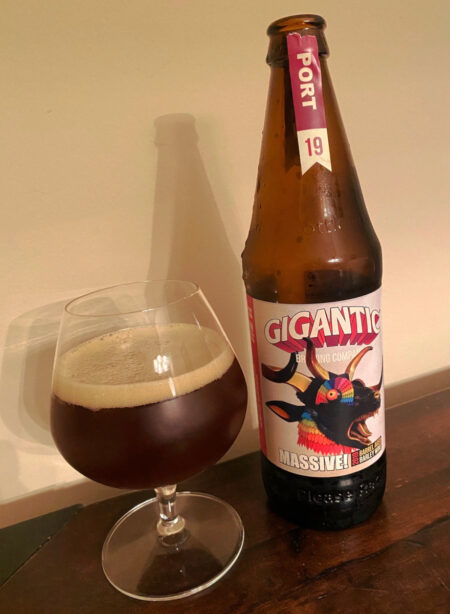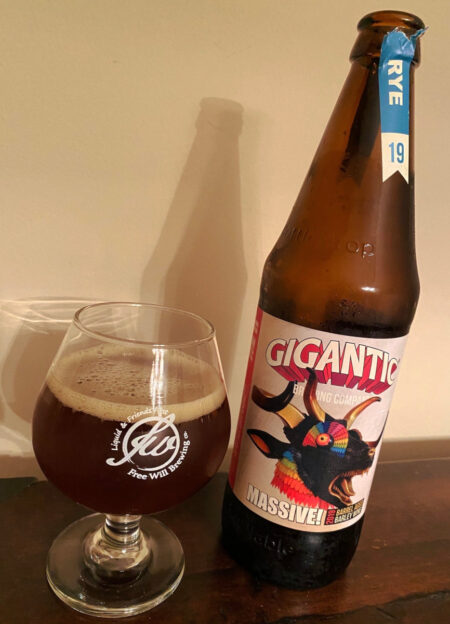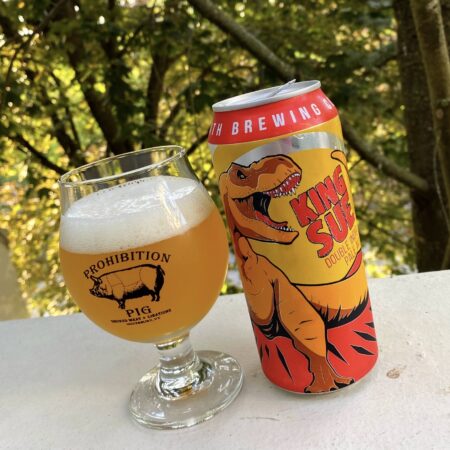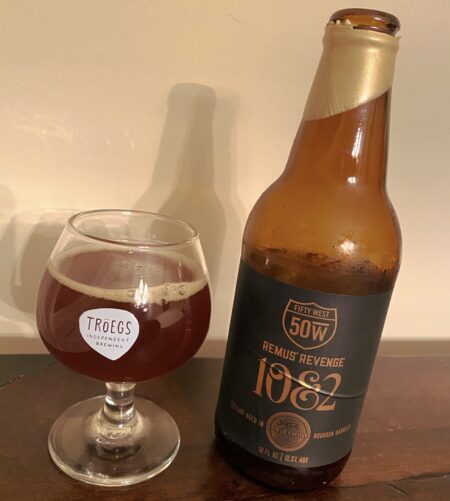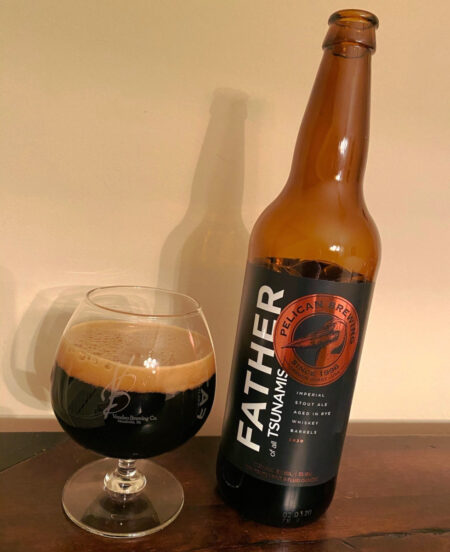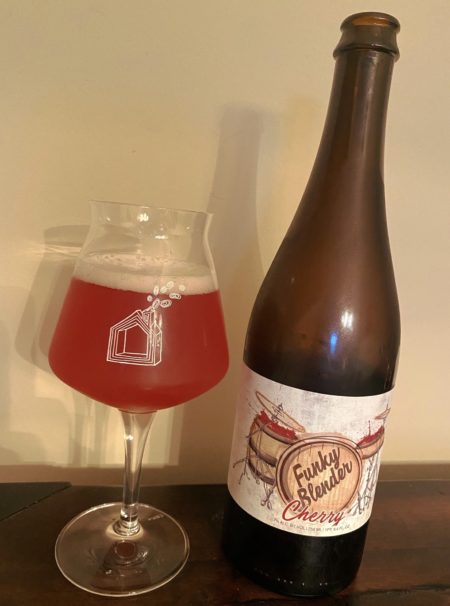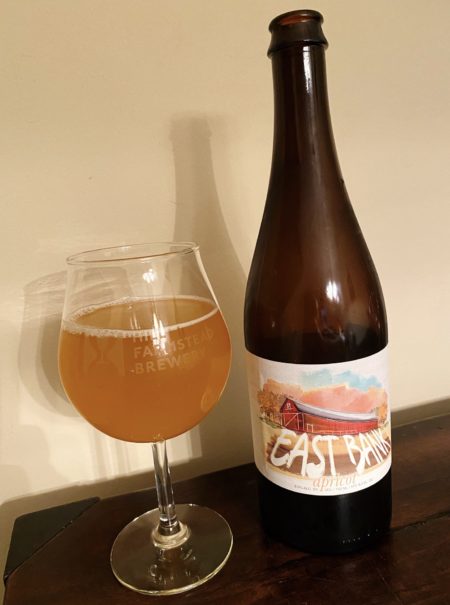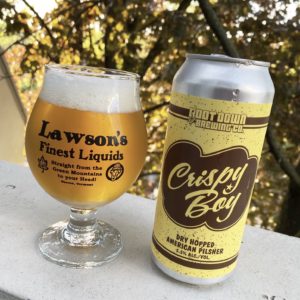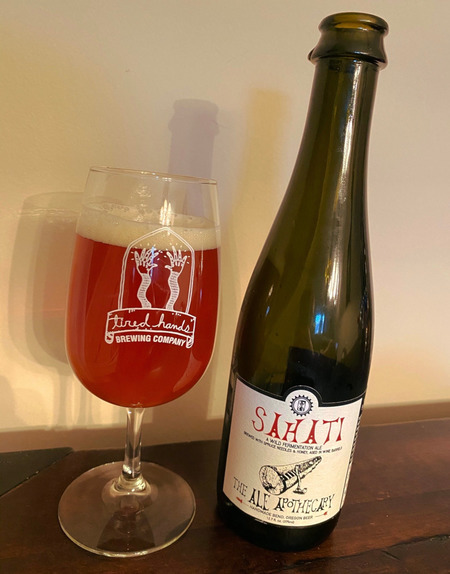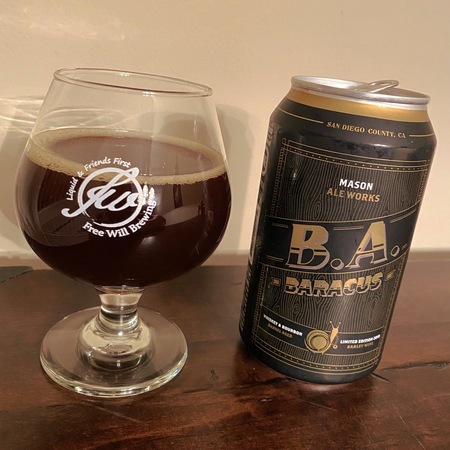I’ve noticed an uptick in the prevalence of strong ale blends. Because I’m very observant. Totally not a recency bias thing. Besides, such experiments have long dotted the beer landscape. Firestone’s Anniversary beers are perhaps the best example. A combination of beers brewed and barrel aged for the specific purpose of blending, they usually turn out pretty well. The Bruery’s Mélange series is a little more uneven, but it has its bright spots. Lots of other examples, ranging from weird to good to eveywhere inbetween.
The trick is to blend two different beers together such that they become more than the sum of their parts. A Voltron of beer, if you will. This is more difficult than it sounds, especially once you start blending different styles together. One beer can dominate, sometimes even in small quantities.
Mason Second Son is today’s example. It’s a 50/50 blend of Mason Ale Works’ excellent B.A. Baracus barleywine and their B.A. Cash imperial stout. This is a tenuous project as it is because a stout can easily overwhelm the barleywine, and in this case, an added component further complicates matters. Yes, the stout has the dreaded addition of coffee. My reticence for coffee beers is well known, but I can respect the best examples. In this case, the blending really muddles the flavors, making me wish I was drinking one component of the blend or the other, but not both together. It’s not bad or poorly made or infected or anything, it’s just conceptually flawed.

Mason Ale Works Second Son – Pours a very dark brown, almost black color with a finger of light tan head. Smells nice, rich caramel, toffee, bourbon, oak, and a surprising amount of vanilla, with some roasty stout aromas leavened by fruitier barleywine and perhaps a touch of hops. Only a faint, lurking menace of coffee in the background. Taste is a little more focused on the coffee stout side of things. Roast, coffee, with much less of the caramel, toffee, bourbon, oak, and vanilla than the nose would have you believe. It’s still there, and this is pleasant enough, but the nose fooled me into thinking this would be more barleywine than it is… Mouthfeel is full bodied, but not quite as rich and chewy as you’d expect. There’s plenty of booze and a nice, gentle carbonation. Overall, an adequate blend, though I do really wish the coffee wasn’t there. I almost think that it would be better with a much higher dose of coffee. As it is, it overwhelms the more subtle elements of the beer while not being big enough to really carry the beer by itself. I enjoy this just fine, but my inner curmudgeon won’t let me rate it higher than a B
Beer Nerd Details: 14% ABV canned (12 ounce). Drank out of a snifter on 7/17/20. Vintage: 2019.
It’s a good thing I still have a couple of cans of B.A. Baracus, which is definitely worth seeking out.
